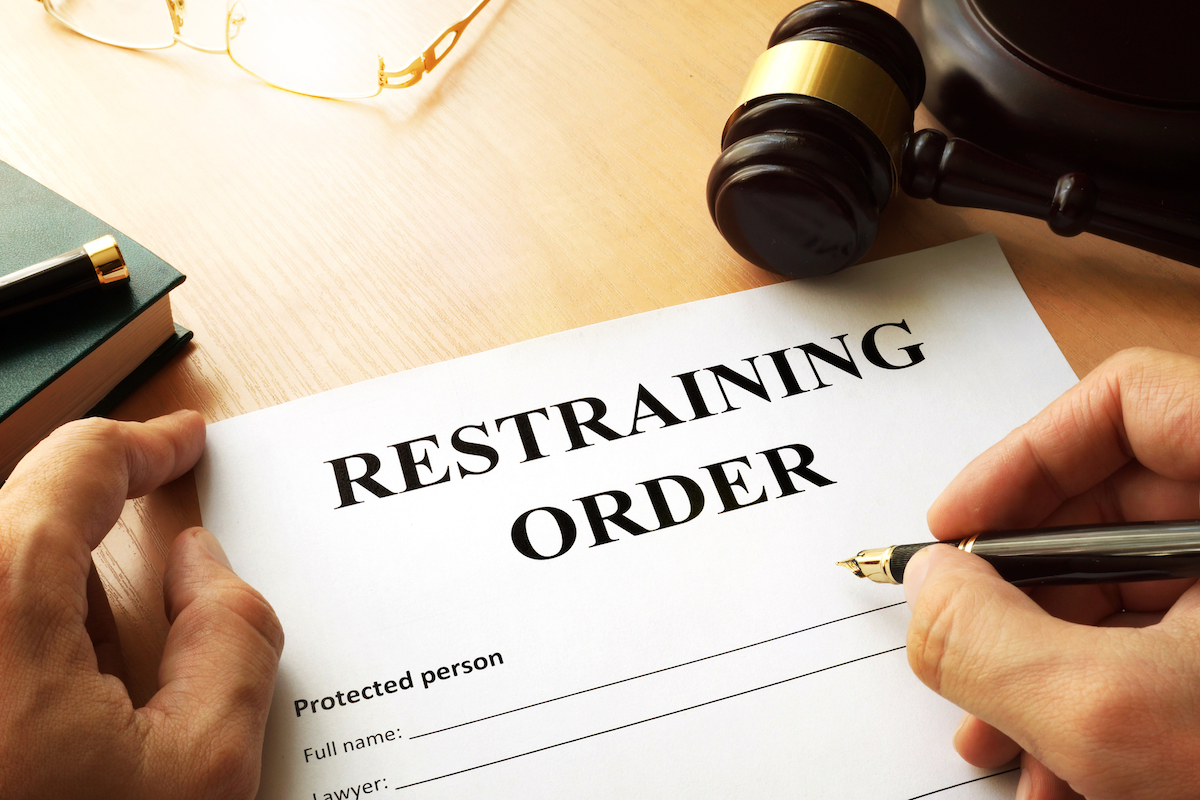Understanding Harassment Restraining Orders: What You Need to Know
Harassment Restraining Order. What is it and how to obtain one?
Harassment can be a deeply distressing experience, leaving individuals feeling vulnerable and unsafe. Fortunately, the legal system provides recourse through the issuance of restraining orders. If you find yourself in a situation where you are being harassed, it is crucial to understand what a restraining order entails and how it can protect you. This article aims to provide a comprehensive overview of harassment restraining orders, from what they are to how to obtain one.

What is a Harassment Restraining Order?
A Harassment Restraining Order is a legal document issued by a court that prohibits an individual from engaging in specified behaviors towards another person. These behaviors can include harassment, stalking, physical abuse, any action that causes a person to fear for their safety or well-being, or any actions that impacts their privacy and/or security. Restraining orders are designed to create a legal barrier between the victim and the perpetrator, ensuring the victim’s protection and peace of mind.
Types of Restraining Orders
Restraining orders can vary in scope and duration, depending on the jurisdiction and the specific circumstances of the case. Emergency harassment restraining orders are typically issued quickly, providing immediate protection in urgent situations. Harassment restraining orders are designed to protect individuals who are being harassed or stalked by another individual.
How to Get a Harassment Restraining Order
Obtaining a Harassment Restraining Order involves a series of steps that must be followed to ensure the legal process is properly executed. The first step is to gather evidence supporting your need for a Harassment Restraining Order. This can include text messages, emails, photographs, or any documentation that demonstrates the harassment, stalking, or unwanted acts that impact your safety, security and/or privacy. Once you have gathered the necessary evidence, you will need to visit your local courthouse to request the appropriate forms. These forms will typically require you to provide personal information, details of the harassment, and any supporting evidence. It is crucial to be thorough and accurate when completing the forms, as any inconsistencies may affect the outcome of your request.

The Process of Obtaining a Harassment Restraining Order
Once you have completed the necessary forms, you will need to file them with the court clerk. Depending on your jurisdiction, you may be required to pay a filing fee or provide an affidavit explaining your inability to pay. The court will review your request and either immediately grant or deny the request. The court may schedule a hearing to determine whether a restraining order should be issued. During the hearing, you will have the opportunity to present your evidence and explain why you need the Harassment Restraining Order in place. It is essential to be prepared and articulate during this process, as it will greatly impact the court’s decision. If the court grants your request, a restraining order will be issued, and you will receive a copy. It is crucial to keep this copy with you at all times, as it serves as legal protection and can be presented to law enforcement if necessary.
Understanding the Legal Requirements for Obtaining a Restraining Order
To obtain a restraining order, you must meet certain legal requirements. Generally, you must demonstrate that you have been subjected to harassment or stalking, that you fear for your safety or well-being, that there have been two or more unwanted acts that impact your safety, security and/or privacy, or that the person you are seeking protection from is capable of causing harm. It is advisable to consult with a legal professional or research your local laws to ensure you meet the necessary criteria.
Finding a Harassment Restraining Order Lawyer
Navigating the legal system can be complex, especially when dealing with sensitive matters such as harassment. While it is possible to obtain a Harassment Restraining Order without legal representation, seeking the assistance of a lawyer can greatly enhance your chances of success. A lawyer experienced in Harassment Restraining Order cases can provide valuable guidance throughout the process, ensuring that all necessary documents are completed correctly and that your rights are protected.
How a Harassment Restraining Order Can Protect You
A Harassment Restraining Order can provide significant protection and peace of mind to individuals who are being harassed or stalked. By legally prohibiting the perpetrator from contacting or approaching you, a restraining order creates a physical and emotional barrier between you and the person causing harm. This legal document serves as a powerful deterrent, as violating a Harassment Restraining Order can result in severe legal consequences. Additionally, having a Harassment Restraining Order in place allows law enforcement to take immediate action if the order is violated, ensuring your safety and well-being.
Violating a Harassment Restraining Order
Violating a Harassment Restraining Order is a serious offense and can have severe consequences for the perpetrator. If the person subject to the order contacts you directly or through third parties, approaches you, or engages in any behavior prohibited by the restraining order, it is essential to document the violation and report it to law enforcement immediately. Violating a Harassment Restraining Order is a criminal offense, and the perpetrator may face fines, imprisonment, or other penalties depending on the jurisdiction and the severity of the violation. Repeated violations may lead to increased penalties and/or additional imprisonment.
It is crucial to take any violation seriously and seek legal assistance if necessary to ensure your safety and the enforcement of the order.
How Long Does a Harassment Restraining Order Last?
The duration of a restraining order can vary depending on the jurisdiction and the specific circumstances of the case. In some cases, restraining orders may be temporary, providing immediate protection until a court hearing can be scheduled. If the court grants a restraining order, it may be valid for a specified period, such as several months or years. You can also possibly apply for an extension of a Harassment Restraining Order if the need for protection continues beyond the initial duration.
Alternatives to Obtaining a Harassment Restraining Order
While Harassment Restraining Orders can be an effective tool in protecting individuals from harassment, they may not always be the most suitable solution for every situation. In some cases, alternative measures may be more appropriate or necessary. Mediation, counseling, or conflict resolution programs can help address underlying issues and facilitate communication between parties involved in a dispute. Additionally, seeking support from community organizations, such as domestic violence shelters or counseling services, can provide guidance and resources to help individuals navigate difficult situations. It is essential to assess your specific circumstances and consult with professionals to determine the most appropriate course of action.
Harassment Restraining Orders – legal protection and peace of mind
Harassment Restraining Orders are an essential legal tool that can provide protection and peace of mind to individuals facing harassment or stalking. Understanding the process of obtaining a Harassment Restraining Order, the legal requirements involved, and the consequences of violation is crucial for anyone seeking this form of protection. If you find yourself in a situation where you are being harassed or stalked, do not hesitate to seek help and explore the possibility of obtaining a Harassment Restraining Order. Remember, your safety and well-being should always be a priority, and the legal system is there to support you in your time of need. If you are seeking the advice and assistance of an attorney when it comes to Harassment Restraining Orders, the experts at Jeddeloh Snyder Stommes are available and able to assist you.
Minnesota Law Articles

Divorce vs. Legal Separation in Minnesota
The term Dissolution of Marriage has the same meaning as Divorce under Minnesota statute. The meaning of the term Legal Separation is often confused in many ways, especially involving divorce proceedings. There is a difference between Divorce and Legal Separation, and...
